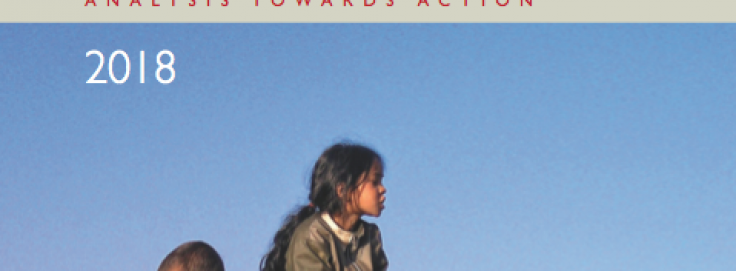
Search
Nepal’s first official national Multidimensional Poverty Index (MPI) is launched today in Kathmandu

The index was developed by the National Planning Commission of the Government of Nepal together with Oxford University’s leading centre on multidimensional poverty, Oxford Poverty & Human Development Initiative (OPHI). The World Bank and the United Kingdom – Department for International Development (DFID) offered technical and financial support.
The new index shows that 28.6% of Nepalis are still multidimensionally poor – meaning that their lives are battered by several deprivations simultaneously. But it also reveals that Nepal actually halved its official MPI between 2006 and 2014, from 0.313 to 0.127.
Swarnim Waglé, Vice-Chair of the National Planning Commission said, “the MPI confirms that the pace of poverty reduction in Nepal, measured both on monetary and non-monetary terms, has been impressive. But the span of human deprivations, especially on nutrition and schooling, poses a formidable policy challenge in specific areas.” He expressed hope that the MPI, disaggregated by provinces, would give Nepal’s new beginning as a federal country an influential policy head start.
OPHI Director Dr Sabina Alkire acclaimed the scale of national poverty reduction as “both dramatic and encouraging”. She said “This Nepali achievement shows that change is not only possible but can also be accelerated”.
The Nepal MPI follows the indicators of the Global MPI, having three dimensions and ten indicators such as malnutrition, low education, or inadequate sanitation. Using the latest data from the Multiple Indicator Cluster Survey (MICS) 2014, it adapts the Global MPI to national needs, for example in the case of Nepal to include roofing materials.
The index exposes substantial variations in the rate of poverty across the newly formed seven provinces of Nepal. Provinces 6 and 2 have the highest rates of multidimensional poverty – about half of the people are poor. In Provinces 5 and 7, the rate is 30%, and in Provinces 3 and 4, it is less than 15%. The study provides briefings on multidimensional poverty in each of the provinces. As the new provincial governments take up their responsibilities, the MPI can be used to shape budgets and multi-sectoral policies that will accelerate progress in the coming period.
The Nepal MPI also disaggregated by age group, showing that children aged 0-9 years are the poorest age cohort, with 41.6% of them living in multidimensional poverty. Even allowing for the design structure, it is clear that children in Nepal are disproportionately affected by multidimensional poverty, as is the case in many countries.
Nepal has made statistically significant progress in each of the MPI’s ten component indicators from 2006-2011-2014. The indicators with the highest contributions to poverty are malnutrition and insufficient years of schooling. In the future, it is anticipated that the Nepal MPI launched today will be used to shape social policy and to monitor its effectiveness.
The Multidimensional Poverty Index report is available here.















